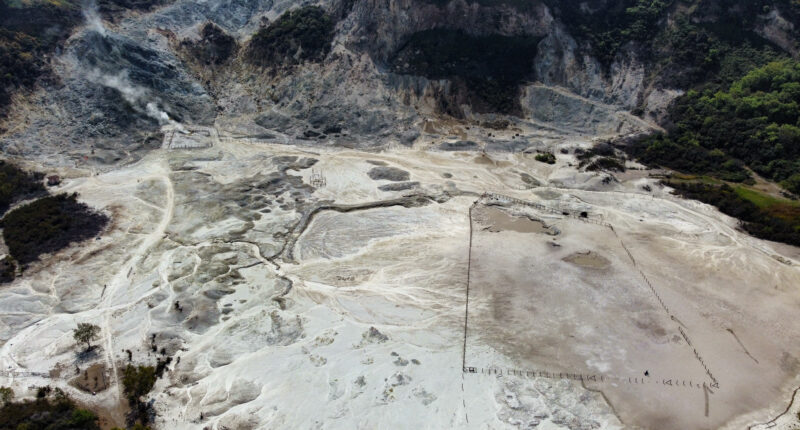THE Italian supervolcano that may have killed off our Neanderthal ancestors has a “realistic possibility” of erupting again, scientists have warned.
Campi Flegrei, which last blew in 1518, has recorded thousands of earthquakes since around 1950, new research published in the Communications Earth & Environment journal has revealed.
Located in the south of the country, near Naples, the “restless” volcano is around 1,250 miles from London, UK and about 7,000 miles from New York, US.
Is it likely to erupt?
It’s been more than 500 years since the volcano last erupted.
The 7-mile-long site has been inactive for almost half a century, but over 600 earthquakes were recorded in the area in April alone.
Campi Flegrei’s crust is becoming weaker and “moving closer to rupture”, a study by University College London and Italy’s National Research Institute for Geophysics and Volcanology warned this month.


With numbers rising in the area alongside experts’ warning, an evacuation plan has been prepared for the 1.5million people who live above the vast underground volcano complex.
What will happen if it does?
Campi Flegrei, which means “burning fields” or “fiery fields,” is sprawling network of 24 craters that are mostly hidden beneath the Earth’s surface.
Although it is frequently referred to as a supervolcano, it hasn’t yet officially earned this title.
Supervolcanoes are volcanoes that can produce eruptions of the highest magnitude, expelling more than 240 cubic miles of material in the process.
Most read in Tech
Yet Campi Flegrei’s biggest ever eruption ejected up to 70 cubic miles of material, ranking it as a still-disastrous category 7 on the volcanic scale.
Nevertheless, experts anticipate the effects of a Campi Flegrei eruption to be devastation.
If Campi Flegrei were to reenact its largest previous eruption, it would chuck massive amounts of molten rock and volcanic gases – including fluorine which kills plants and causes disease in animals – high into the stratosphere.
The plume of sulfur and toxic ash that could plunge Earth into global winter for several years, experts have warned.
It would smother and destroy crops and cause mass extinctions, as well as unleash 100-feet-high tsunamis.
Around 39,000 years ago, Campi Flegrei had a huge eruption, and the winter that followed is thought by some to have contributed to the extinction of the Neanderthals – however, this theory is disputed by others.
“Our new study confirms that Campi Flegrei is moving closer to rupture,” study lead-author Christopher Kilburn, a professor of Earth Science at University College London, said in a statement.
However, he cautioned that this does not make an eruption guaranteed.
He added: “The rupture may open a crack through the crust, but the magma still needs to be pushing up at the right location for an eruption to occur.”
Best Phone and Gadget tips and hacks

Looking for tips and hacks for your phone? Want to find those secret features within social media apps? We have you covered…
We pay for your stories! Do you have a story for The Sun Online Tech & Science team? Email us at [email protected]
This post first appeared on Thesun.co.uk








